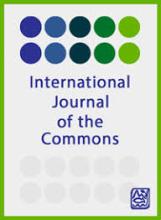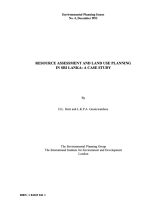/ library resources
Showing items 1 through 9 of 6508.Mapping the characteristics and extent of environmental conflicts related to land use is important for developing regionally specific policies.
The accelerated development of new urban areas has an impact on changes in the spatial use and complexity of ecosystems.
The complexity of spatial use has an impact on poverty and the development of slum settlements towards a decrease in environmental quality.
The report answers the following questions:
1. Is perpetual fee simple ownership of real property permitted? If not, what are the principal forms of ownership, or other principal form of ownership, of real property?
In Timor-Leste, customary institutions contribute to sustainable and equitable rural development and the establishment of improved access to and management of land, water and other natural resources.
From Cambodia to Kosovo, and now East Timor, the United Nations has undertaken broad governmental functions in an effort to ensure that peace is maintained after the departure of the peacekeepers. On its face, these “peace-building” missions have a powerful logic.
ABSTRACTED FROM EXECUTIVE SUMMARY:
This review does not attempt to be comprehensive. Instead, we highlight:
-
benchmarks in the evolution of land use policies in Sri Lanka;
Climate warming and human actions both have negative impacts on the land cover of Mongolia, and are accelerating land degradation.
Indigenous Peoples and local communities manage more than half of the world´s land. These biodiverse ancestral lands are vital to the people who steward them and the planet we all share. But governments only recognize indigenous and community legal ownership of 10 percent of the world´s lands.
Paginación
Land Library Search
Through our robust search engine, you can search for any item of the over 73,000 highly curated resources in the Land Library.
If you would like to find an overview of what is possible, feel free to peruse the Search Guide.






